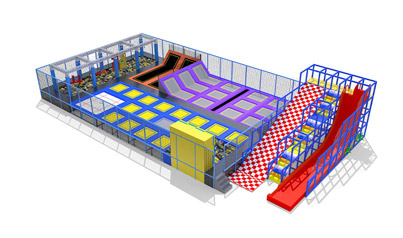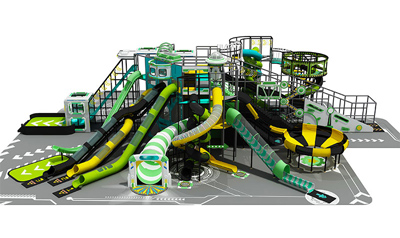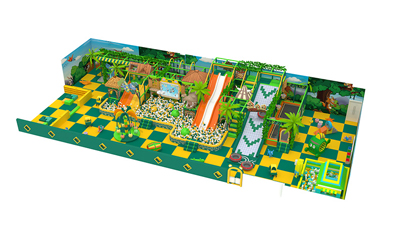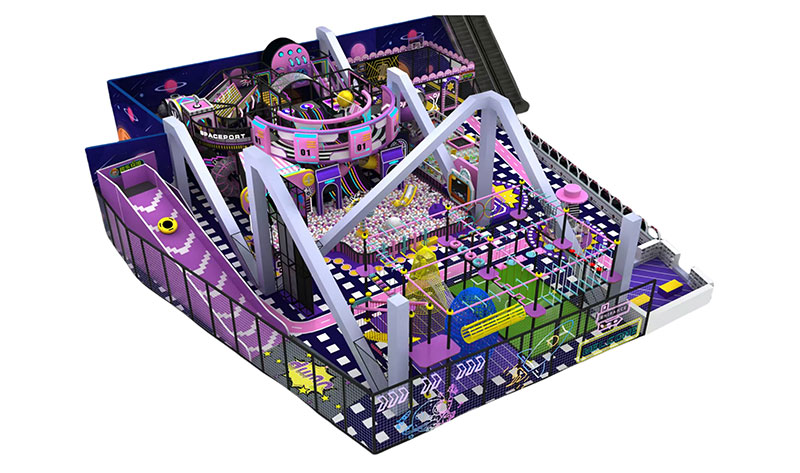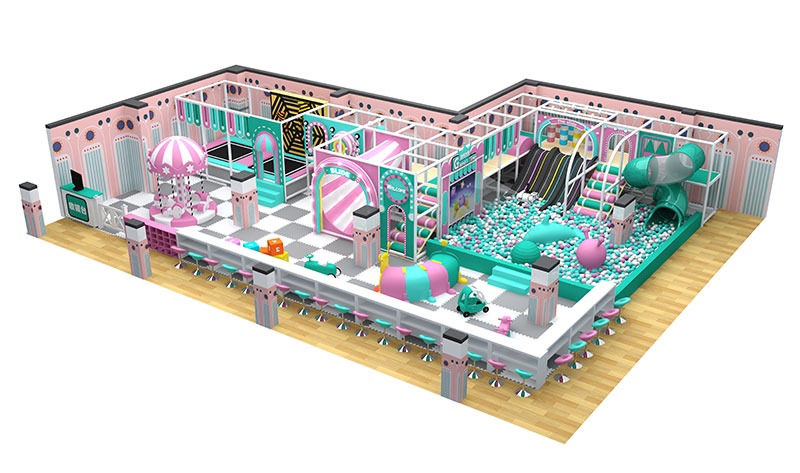When choosing a safe indoor playground for children, here are some suggestions:
1. View facilities and equipment:
- Check that the equipment is structurally sound and that there are no rusted or damaged parts.
- Make sure there are no sharp edges or protruding parts that could cause scratches or other injuries.
- Pay attention to whether there are safety warning signs on the equipment, such as age restrictions, maximum load capacity, etc.
2. Consider hygiene and cleanliness:
- Observe the cleanliness of the indoor environment, including the cleanliness of floors, equipment and toys.
- Understand the cleaning schedule and frequency of indoor playgrounds and ensure they are cleaned and disinfected regularly.
- Pay attention to whether hygiene products such as hand sanitizer and paper towels are provided so that children and parents can keep clean.
3. Pay attention to safety regulations:
- Understand the safety regulations of indoor playgrounds, such as prohibiting running, climbing, etc.
- Ensure staff are able to provide appropriate safety guidance and supervision and handle any safety issues or emergencies promptly.
- Observe that there are enough staff present to ensure the safety of the children.
4. Observe other parents and children:
- Observe the behavior of other parents and children to see if they are following rules and respecting each other.
- Pay attention to whether parents are actively involved in their children's activities, alert and aware of their surroundings.

5. Pay attention to emergency situations:
- Understand the emergency handling procedures of indoor playgrounds, such as the location of first aid kits, staff training, etc.
- Make sure you know how to report an emergency and the steps to contact emergency medical services.
6. Check security certification:
- Check whether the indoor playground meets local safety standards and certification requirements, such as ASTM International Safety Standards or TÜV certification.
- Relevant certification documents or certificates can be obtained from the playground to ensure its safety and reliability.
7. Pay attention to ventilation and air quality:
- Observe the ventilation of the indoor playground to ensure there is good air circulation.
- Avoid overcrowded venues to maintain air quality and comfort.
8. Avoid mixed-age areas:
- Choose an indoor playground with age-specific areas to ensure children of different ages are playing in age-appropriate facilities.
- Make sure there are clear separations between age groups to avoid older children causing injury or discomfort to younger children.
By considering the above points in detail, you can more comprehensively evaluate and select a safe indoor playground for children to provide a safe, healthy and enjoyable play environment for your children.
What are the benefits of playground equipment for children’s development?
Playground equipment has many developmental benefits for children, including but not limited to the following:
1. Physical development:
Running, climbing, jumping and other activities on the playground can promote children's muscle development, coordination and balance, and help enhance physical fitness. Through activities such as climbing, jumping, and sliding on the playground, children can feel their own body and space. They learned to measure distances, judge heights, and gradually formed an awareness of their own abilities, improving their perception and spatial cognition abilities.
2.Social skills:
In the playground, children have the opportunity to interact, collaborate and share fun with other children, developing their social skills, teamwork and empathy. Some play equipment requires the cooperation of multiple children to use it. In the process, they learned to coordinate actions, share resources and communicate effectively, and developed team spirit and leadership skills.
3. Cognitive development:
Some play equipment designs help stimulate children's curiosity and imagination, and promote their cognitive development, problem-solving skills and creativity. Some complex play equipment, such as rock climbing walls, mazes, etc., require children to think and formulate solutions. They develop problem-solving and decision-making skills by being required to analyze situations, plan, and make decisions.
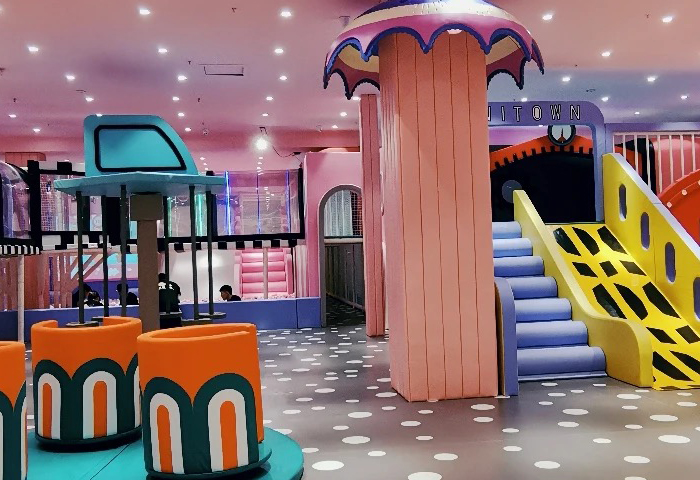
4. Emotional development:
Playing on the playground allows children to release stress, experience happiness, and learn to deal with setbacks and failures, helping to develop their emotional management skills and self-confidence. On the playground, children will face various challenges and adventures, such as climbing high platforms and other activities that require them to face their fears and overcome difficulties, thereby cultivating their emotional regulation and self-control skills and enhancing their courage and resilience.
5. Feeling experience:
Some play equipment are designed to stimulate children's sensory experiences, such as touch, hearing, vision, etc., which can help them explore the world and understand their own feelings and emotions. They can create a variety of fantastic scenes and stories through free play and construction, cultivating creative thinking and artistic expression.
6. Motor skills:
By performing various activities on the playground, children can exercise various motor skills, such as flexibility, speed, strength, etc., which helps them establish a healthy lifestyle and exercise habits.
Overall, playground equipment provides a safe and fun environment for children. Through playground activities, children can fully develop their physical, cognitive, social and emotional abilities, while also providing parents and guardians with An opportunity to get to know and spend time with your children.


